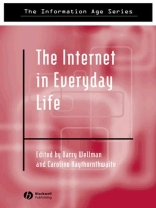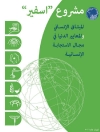The Internet in Everyday Life is the first book to
systematically investigate how being online fits into people’s
everyday lives.
* * Opens up a new line of inquiry into the social effects of the
Internet.
* * Focuses on how the Internet fits into everyday lives, rather
than considering it as an alternate world.
* * Chapters are contributed by leading researchers in the
area.
* * Studies are based on empirical data.
* * Talks about the reality of being online now, not hopes or fears
about the future effects of the Internet.
Содержание
List of Figures.
List of Tables.
Foreword: The Virtual Community in the Real World. (Howard
Rheingold).
Series Editor’s Preface: The Internet and the Network Society .
(Manuel Castells).
Introduction: The Internet in Everyday Life. (Caroline
Haythornthwaite and Barry Wellman).
Part I: Moving The Internet Out Of Cyberspace.
The internet in Everyday Life: An Introduction. (Caroline
Haythornthwaite and Barry Wellman).
Part II: The Place Of The Internet In Everyday Life.
1. Days and Nights on the Internet. (Philip Howard, Lee Rainie,
and Steve Jones).
2 The Global Villagers: Comparing Internet Users and Uses Around
the World. (Wenhong Chen, Jeffrey Boase and Barry Wellman).
3 Syntopia: Access, Civic Involvement and Social Interaction on
the Net. (James Katz and Ronald Rice).
4 Digital Living: The Impact (or Otherwise) of the Internet in
Everyday British Life. (Ben Anderson and Karina Tracey).
5 The Changing Digital Divide in Germany. (Gert Wagner, Rainer
Pischner and John Haisken-De New).
6 Doing Social Science Research Online . (Alan Neustadtl, John
Robinson and Meyer Kestnbaum).
Part III: Finding Time For The Internet.
7 Internet Use, Interpersonal Relations and Sociability: A Time
Diary Study. (Norman Nie, D. Sunshine Hillygus and Lutz
Erbring).
8 The Internet and Other Uses of Time. (John Robinson, Meyer
Kestnbaum, Alan Neustadtl and Anthony Alvarez).
9 Everyday Communication Patterns of Heavy and Light Email
Users. (Janell Copher, Alaina Kanfer and Mary Bea Walker).
Part IV: The Internet In The Community.
10 Capitalizing on the Net: Social Contact, Civic Engagement and
Sense of Community. (Anabel Quan-Haase and Barry Wellman).
11 The Impact of Computer Networks on Social Capital and
Community Involvement in Blacksburg. (Andrea Kavanaugh and Scott
Patterson).
12 The Not So Global Village of Netville. (Keith Hampton and
Barry Wellman).
13 Gender and Personal Relationships in Home Net. (Bonka Boneva
and Robert Kraut).
14 Belonging in Geographic, Ethnic and Internet Spaces. (Sorin
Matei and Sandra Ball-Rokeach).
Part V: The Internet At School, Work And Home.
15 Bringing the Internet Home: Adult distance learners and their
Internet, Home and Work worlds. (Caroline Haythornthwaite and
Michelle Kazmer).
16 Where Home is the Office: The New Form of Flexible Work.
(Janet Salaff).
17 Kerala Connections: Will the Internet Affect Science in
Developing Areas?. (Teresa Davidson, R. Sooryamoorthy and Wesley
Shrum).
18 Social Support for Japanese Mothers Online and Offline .
(Kakuko Miyata).
19 Shopping Behavior Online. (Robert Lunn and Michael
Suman).
Index
Об авторе
Barry Wellman learned to keypunch in 1965 and started
chatting online in 1976. Now the head of the University of
Toronto’s Net Lab, he’s a leading scholar of cybersociety,
community, and social network analysis. Prof. Wellman has pioneered
understanding of both communities and computer networks as social
networks. He founded the International Network for Social Network
Analysis, chaired the Community section of the American
Sociological Association, and serves on the Executive Committee of
the Association for Internet Research. He’s written more than 200
articles and edited two other books. His website has received
20, 000 hits in three years.
Caroline Haythornthwaite is a faculty member at the
Graduate School of Library and Information Science, University of
Illinois at Urbana-Champaign, where she is also Coordinator of the
Undergraduate Minor in Information Technology Studies. Before
returning to full-time study, she spent over 10 years in software
development as a programmer, systems analyst, and software
development manager. Her research focuses on how people work and
learn together at a distance via computer technology and the
Internet, and examines what combinations of computer media, and
work and social communications build ties and social networks
online. Current projects include examination of learning networks
and community ties among distance learners, and processes of
knowledge co-construction among members of distributed research
teams.












